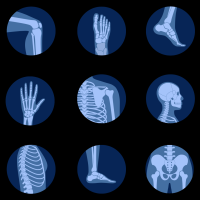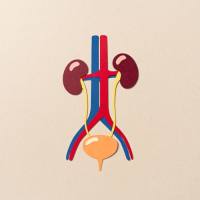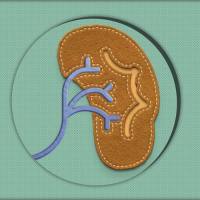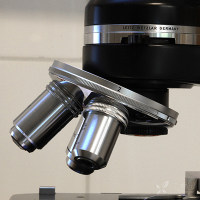【摘要翻译】计算机支持的经直肠超声(C-TRUS)诊断前列腺癌
直肠指检和经直肠超声(TRUS)是临床上最常用的诊断前列腺癌的方法。但此两种方法在很大程度上不能辨别病变的良恶性质。尽管TRUS在引导任何区域前列腺的穿刺方面是一个相当好的工具。图像TRUS最明显的问题是缺乏特异性,尤其是对于一个没有经验的操作者。为了提高TURS的诊断效力,我们研制了计算机分析TRUS信号信息(C-TRUS/ANNA)系统,经根治性前列腺切除术标本的病理组织学发现验证有效。问题是:C-TRUS能够检测出连多点系统性活检也遗漏的前列腺癌吗?入选标准:系统性随机活检阴性者(不论其活检的部位或具体的点数)。五种亚视觉的算法被用来评估超声信号信息。由C-TRUS标记出最可疑的区域,并引导针刺活检这一特殊区域。在这项研究中132名曾行系统性随机穿刺(6-72点,平均12点)活检阴性的患者经C-TRUS评估。PSA3.1-36 ng/ml, 平均9.01 ng/ml.。C-TRUS通过靶向活检发现了66例(50%)前列腺癌,在此66名男性中平均有2个活检阴性区域,平均穿刺12针。文献报道,在此类患者中系统性六点穿刺活检发现前列腺癌的几率为7%。只有5名患者的Gleason评分为5分,25 名患者为6分, 22名患者为7分,15名患者超过7分. 此前瞻性临床试验的结果显示C-TRUS可以即使多点系统性随机活检也不能发现的临床型前列腺癌。另外此研究支持利用专业技能和改进图像模式的提高前列腺癌活检率的策略,而非仅仅提高随机活检的数量(如在一个区域内穿刺141针)
Urologe A. 2004 Oct 29 [Epub ahead of print]
Computerized supported transrectal ultrasound (C-TRUS) in the diagnosis of prostate cancer.
Loch T. Klinik fur Urologie des Diakonissenkrankenhauses Flensburg, Lehrkrankenhaus des Universitatsklinikums Schleswig Holstein.
In the diagnosis of prostate cancer digital rectal examination and transrectal ultrasound (TRUS) are the most utilized methods for clinical evaluation. However, both methods are not able to differentiate between benign and malignant findings with a high amount of certainty. Nevertheless, TRUS is an excellent tool to guide biopsies in practically any region of the prostate. The most significant problem of visual TRUS interpretation is the lack of specificity, especially being an inexperienced user. In order to enhance the diagnostic capabilities of TRUS we developed a computerized analysis of the TRUS signal information (C-TRUS/ANNA), which was validated by the pathohistologic findings of radical prostatectomies. The question was asked: Can C-TRUS detect cancer that has been missed by even multiple systematic biopsies? The entrance criteria was prior negative systematic random biopsies regardless of number of biopsy sessions or number of individual biopsy cores. Five C-TRUS subvisual algorithms were utilized to evaluate the information of the ultrasound signal. The most suspicious regions were marked by C-TRUS and biopsied by guiding a needle into that specific location. In this study 132 with a history of 6-72 negative systematic random biopsies (median: 12 cores) were evaluated by C-TRUS. The PSA ranged from 3.1-36 ng/ml with a median of 9.01 ng/ml. C-TRUS detected in 66 (50%) of these 132 patients cancer by targeted biopsies. In thes 66 men the median number of negative biopsy sessions were two and a median of 12 biopsy cores had been taken. From the literature, we would expect a cancer detection rate in this group with systematic sextant biopsies of about 7%. Only five of the detected carcinomas showed a Gleason Score (GS) of 5, were as 25 had a GS of 6, 22 a GS of 7 and 15 a GS above 7.The results of this prospective clinical trail indicate that C-TRUS is able to identify clinically significant cancers that were missed by even multiple systematic random biopsies. In addition, the concept of searching for strategies that utilize expertise and refinement of imaging modalities is supported rather than just elevating the number of random biopsies (i.e. 141 cores in one session).
PMID: 15517143 [PubMed - as supplied by publisher]















































